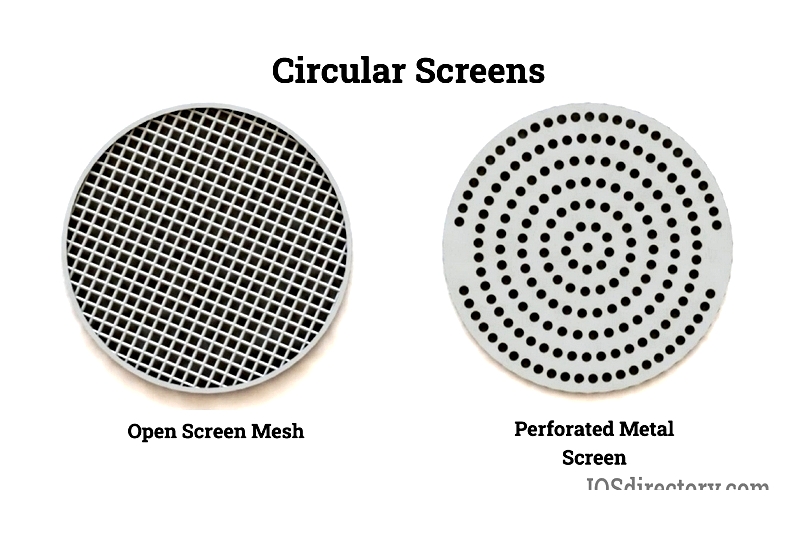Introduction
This article covers everything you need to know about vibratory screening.
You will learn about:
- What Vibratory Screening is
- How Vibratory Screeners Work
- Different Types of Vibratory Screening
- Applications of Vibratory Screening
- And much more...

Chapter 1: What is Vibratory Screening?
Vibratory screening is a technique used to separate bulk solid materials from mixtures of solids and slurries through inertial vibrations. These vibrations allow particles of different sizes to either pass through screen openings or move across the surface. The process begins with vibrations moving materials horizontally, vertically, or circularly over a screen mesh. This separation method enables multiple classifications as materials move from one deck to another in the vibratory screener.

Vibratory screening is used to sort 2D materials like plastic film, paper, cardboard, and fibers from 3D materials such as containers, plastic bottles, cans, stones, and wood. After sorting, materials are collected through the screen openings. Vibratory screeners use gyratory motion to classify materials by size and shape. For best results, materials must move across the screen surface and pass through appropriately sized mesh openings.
Chapter 2: How Vibratory Screening Works
Separation processes have been vital to industries for centuries, particularly in mining, mineral processing, aggregate production, and bulk material handling. Early methods relied on simple square or rectangular devices moved back and forth across a screen surface. While effective for basic sorting, these vibrating screens lacked the precision and throughput needed for modern applications. During the Great Depression, gyratory motion screens improved separation efficiency and accuracy, leading to today's advanced vibratory screening equipment. These include circular, linear, and inclined vibrating screens, widely used in mining, recycling, food processing, and chemical industries.

Gyratory Motion
Gyratory motion improves material distribution during industrial screening, sifting, grading, and separation. This orbital movement maximizes screen surface area use, reducing dead spots and increasing throughput. The gyratory motion features a longer stroke and lower frequency, gently handling friable materials while minimizing fines generation. Modern gyratory screeners optimize yield and separation accuracy for granular and powdered materials.
Gyratory motion is popular in vibratory screening because it quickly distributes feed across the entire screen deck, ensuring even bed depth. This horizontal action promotes efficient stratification, with smaller particles moving beneath the screendeck while oversize material remains on top. This enhances separation, classification, and sifting for both wet and dry applications.
Screen Body
The welded or bolted screen body forms the main structure of a vibrating screen, supporting the screen mesh and deck assemblies. Heavy-duty coil springs or rubber isolation mounts allow the screen body to move freely while minimizing vibration transmission. The screen body also includes counterweights to generate gyrating and vibrating motion in linear and circular screens. Precision engineering ensures stability, reliability, and low maintenance in demanding environments.
Screens
Vibratory screeners may have two to six screen decks, each with customized wire mesh or perforated plate configurations. Screen decks are designed with specific hook systems and aperture sizes based on cut points and throughput needs. Durable materials like stainless steel or high-tensile woven wire cloth withstand continuous vibration, heavy loads, and potential clogging. Self-cleaning designs prevent blinding and maintain consistent efficiency.

Each vibrating screen features mesh weaves like square mesh, ton cap, and ty rod. Square mesh is common in mining and aggregates for uniform separation, while ton cap and ty rod weaves offer strength and anti-blinding benefits for tough materials.

- Square Mesh – Square mesh weaves have precise square openings in an over-under pattern. Variations include two over and one under, always resulting in symmetrical openings. This weave is valued for accuracy and versatility.
- Ton Cap – Ton cap weaves provide stability and strength for heavy or abrasive materials. The square pattern resists deformation and wear, making it ideal for mining and recycling.
- Ty Rod – Ty rod weaves prevent blinding with rectangular openings and supporting shoot wires. This design reduces material buildup, even with damp or sticky particles.
Circular Screens
Circular screens, or rotary sifters, use rotational, orbital, or elliptical motion. Made from woven metals or punched plates, they offer chemical resistance for food, pharmaceutical, and bulk solid processing. Operators can adjust the screen's angle by modifying its position or spring support height, affecting material flow and separation efficiency.
Circular screens oscillate the surface, typically set between 15° and 30°, for optimal material flow and separation. They maintain durability under continuous motion and are easy to disassemble for maintenance in sanitary environments.

Vibration Mechanism
Industrial screening equipment uses counterbalances, drive shafts, or vibratory motors for balanced motion. Linear screen separators use dual motors for straight-line motion, while hummer screens use solenoid-driven action for rapid sifting. Advanced models feature variable frequency drives (VFDs) for customizable vibration speed and amplitude.
Inclined screens use circular vibratory motion with an angled deck, lifting and stratifying materials for enhanced separation. They are widely used in aggregate production, mining, and quarrying for scalping, classifying, and sizing operations.
Drive Motor
Precision-engineered motors power vibrating screens, delivering energy for oscillation. In circular separators, the motor is mounted on a spring base at the center of gravity, enabling stable vibration with adjustable speed. Motors generate multiplane vibrations for maximum efficiency, with eccentric weights creating horizontal and vertical forces.
Energy-efficient designs and adjustable settings improve flexibility, reduce consumption, and accommodate varying material characteristics.

Other Components of a Vibratory Screen Sifter Separator
Key components include the screen body, mesh, vibration mechanism, and drive motor. Supporting parts enhance uptime and service life:
- Suspension Springs – These decouple the screen from structures, absorbing vibrations and reducing noise.
- Supporting Structure – Heavy-duty frames provide stability and alignment, preventing vibration-induced damage.
- Clamps and Seals – Secure screen decks and prevent leaks, crucial for food and pharmaceutical processing.
- Isolation Springs and Bearings – Dampen vibration and reduce friction for reliable operation.
Manufacturers offer various models and customization options for specific needs. Vibratory screens provide industry-leading performance, uptime, and efficiency across diverse sectors.
Chapter 3: Types of Vibratory Screeners
Vibratory screeners come in various types, each optimized for specific applications in




